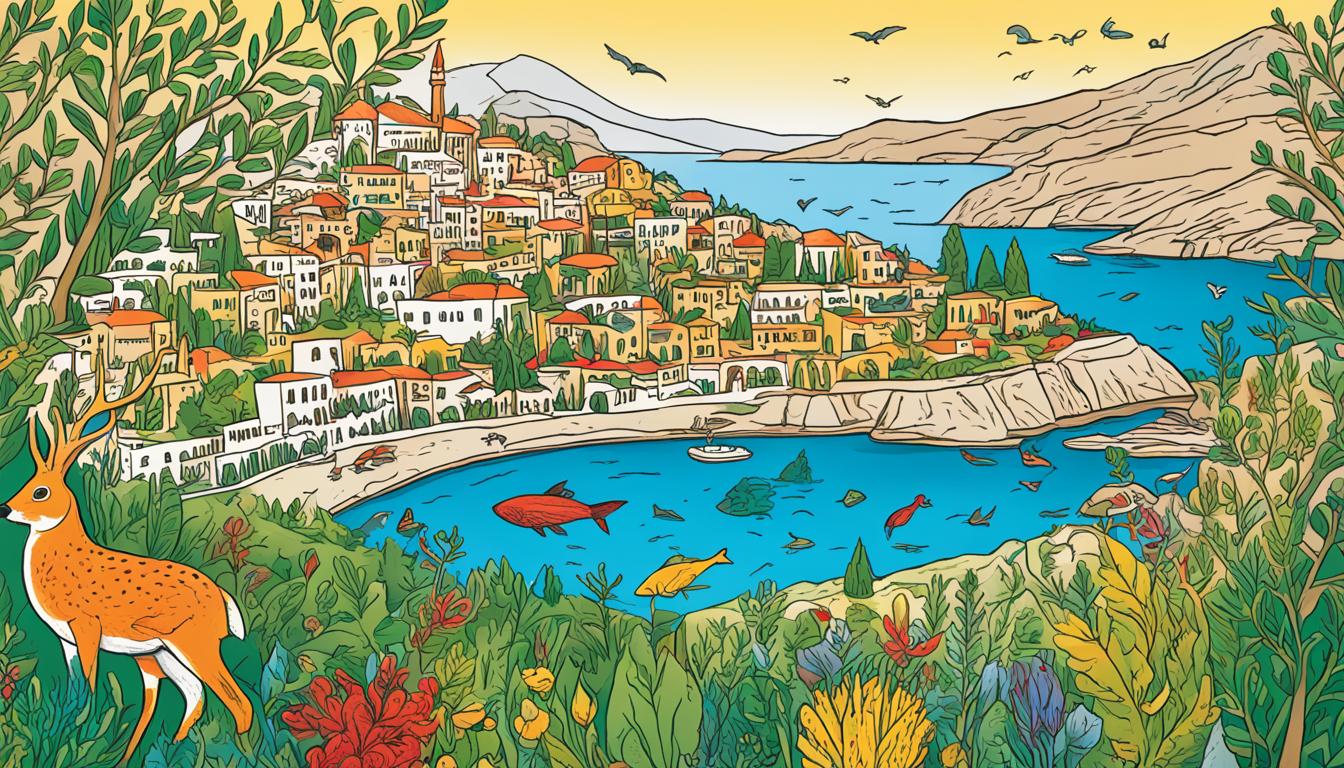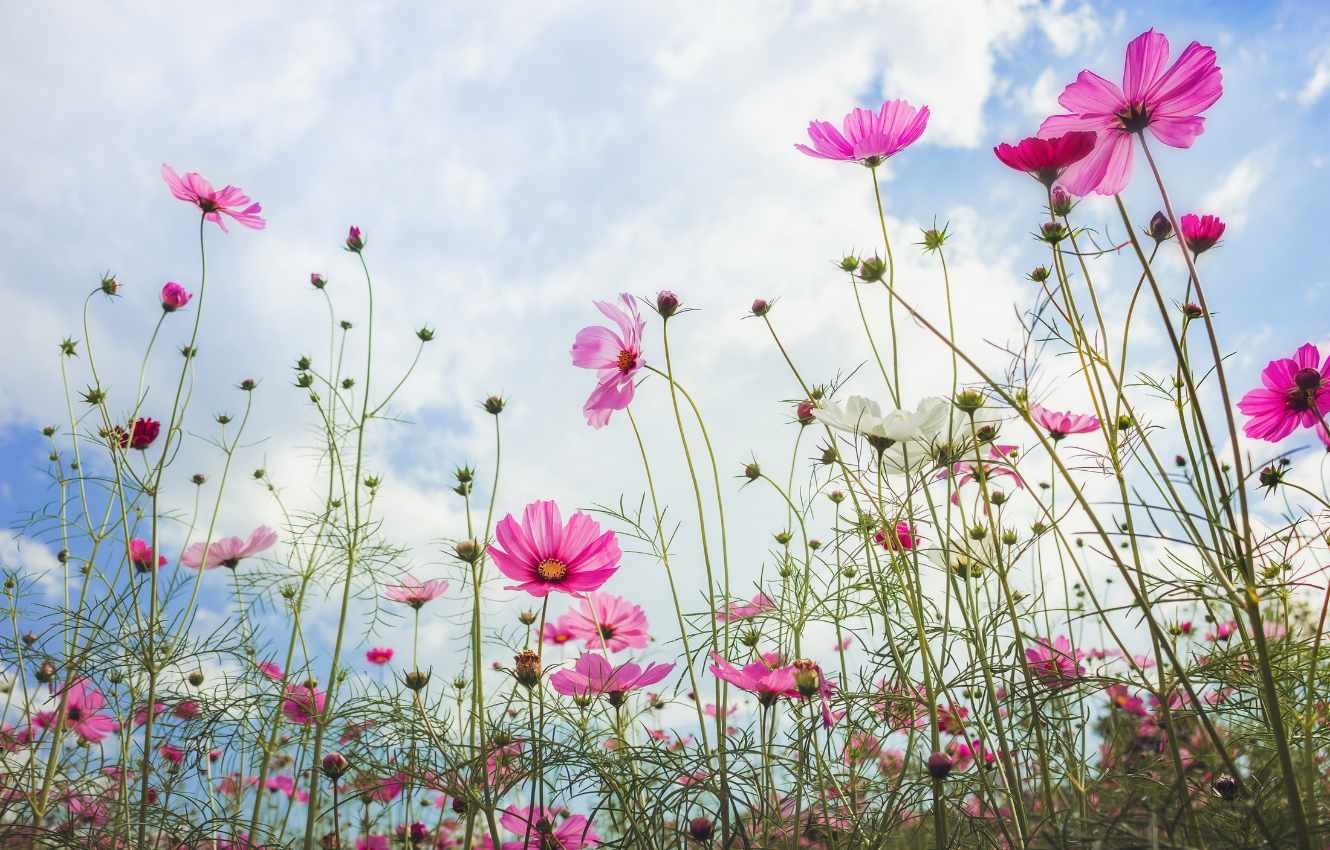Netherlands Biodiversity: Animal and Plant Species and What Is Under Threat
The Netherlands is known for its picturesque landscapes, windmills, and tulips. However, beyond its iconic imagery, the country is also home to a remarkable diversity of plant and animal species. The Dutch ecosystems host a wide range of flora and fauna, creating a vibrant tapestry of biodiversity.
With 51 natural habitat types, representing almost a quarter of all habitat types in Europe, the Netherlands provides a vital haven for wildlife. It boasts 28 species of wild plants and animals protected under the EU Habitat Directive. These protected species include birds, mammals, reptiles, amphibians, and plants, all contributing to the rich tapestry of life in the country.
Key Takeaways:
- The Netherlands contains 51 natural habitat types, representing almost a quarter of all habitat types in Europe.
- The country is home to 28 species of wild plants and animals protected under the EU Habitat Directive.
- Important areas such as the Wadden Sea ecosystem provide habitat for a variety of species and are recognized as Biosphere Reserves by UNESCO.
- The Dutch ecosystems contribute significantly to biodiversity conservation efforts in Europe.
- Preserving and protecting the unique flora and fauna in the Netherlands is crucial for future generations.
Understanding and safeguarding the biodiversity of the Dutch ecosystems is essential for the well-being of both nature and society. Let’s explore the fascinating flora and fauna that call the Netherlands home, as well as the challenges they face.
Flora and Fauna in the Netherlands
The Netherlands is renowned for its diverse flora and fauna, providing a home to a wide range of species. From birds to plants, this beautiful country showcases a rich tapestry of biodiversity.
One notable aspect of the Netherlands’ wildlife is its bird population. The country hosts around 100 bird species that are protected under the EU Birds Directive. These avian inhabitants contribute to the vibrant and dynamic ecosystem found in the Dutch landscape.
In addition to its feathered friends, the Netherlands is also home to unique plant species. Among them, thermophile species have experienced an increase in numbers due to climate change. These indigenous plants thrive in warmer conditions, adapting to the changing environment.
However, while the Dutch flora and fauna offer a delightful spectacle, they face threats from invasive species. These intruders pose a danger to the indigenous biodiversity, disrupting the delicate balance within ecosystems.
As conservation efforts continue, it is crucial to protect and preserve the delicate flora and fauna in the Netherlands. By safeguarding these natural treasures, we can ensure a sustainable future for the country’s remarkable biodiversity.
Threats to Biodiversity in the Netherlands
The sustainable management of biodiversity and the implementation of effective conservation strategies are crucial for preserving the rich natural heritage of the Netherlands. However, biodiversity in the country faces various threats that require urgent attention and action.
The rising temperature in the Netherlands poses a significant challenge to the survival of many species. As temperatures increase, some species may struggle to adapt or migrate quickly enough to suitable habitats, leading to population declines and potential extinctions.
Climate change also affects the timing of seasonal activities in flora and fauna. The shift in seasons can disrupt crucial ecological processes, such as breeding and migration, resulting in mismatches in food supply and a decline in populations.
Furthermore, the Netherlands faces challenges in managing groundwater tables and combating land subsidence, which directly impact wetland ecosystems. Wetlands are essential habitats for various species and play a crucial role in sustainable biodiversity management.

The image above depicts the delicate balance required for sustainable biodiversity management in the face of threats such as climate change and land subsidence. It serves as a reminder of the importance of effective conservation strategies in the Netherlands.
Conservation Efforts in the Netherlands
The Dutch government is committed to protecting and strengthening biodiversity in the Netherlands through various measures. One of the key strategies employed is the establishment of nature reserves and the development of the National Ecological Network. These initiatives aim to preserve biodiversity hotspots in the Netherlands and provide essential habitats for a diverse range of plant and animal species.

To encourage nature-friendly land management practices, the government has implemented countryside stewardship schemes. These programs incentivize farmers and private landowners to adopt sustainable practices that support biodiversity conservation.
The Dutch government recognizes the importance of international collaboration in protecting endangered species and promoting sustainable biodiversity management. It actively supports international agreements aimed at conserving biodiversity and preventing the exploitation of vulnerable ecosystems.
The preservation and restoration of nature reserves play a crucial role in safeguarding the biodiversity of the Netherlands. These protected areas provide essential habitats for both native and migratory species, contributing to the overall health and resilience of ecosystems. They also serve as educational and recreational spaces for the public, fostering a greater appreciation for the natural world.
Furthermore, the establishment of the National Ecological Network aims to create interconnected habitats across the country, ensuring the long-term survival of diverse plant and animal populations. This network of nature reserves, ecological corridors, and green infrastructure enhances the resilience and adaptability of ecosystems, allowing species to thrive despite increasing environmental pressures.
Climate Change and Biodiversity in the Netherlands
Climate change is having significant impacts on biodiversity in the Netherlands, with shifts in species distribution and increasing challenges to ecosystem resilience. The rising temperature and extreme weather events pose threats to the rich biodiversity found in the country. Additionally, the Caribbean islands of the Kingdom of the Netherlands face even more vulnerability and worse conditions compared to the mainland.
One of the effects of climate change on biodiversity in the Netherlands is the redistribution of species. Both southern and northern species are losing ground, while central European species are gaining ground. This shifting distribution can disrupt ecological balance and impact native species that are adapted to specific habitats.
The rising temperature in the Netherlands is another consequence of climate change that has a direct impact on biodiversity. The changes in temperature can negatively affect the survival and reproduction of certain species, especially those that are sensitive to temperature variations. Furthermore, extreme weather events such as heatwaves, storms, and floods can have devastating effects on ecosystems, leading to the loss of biodiversity.

Beyond the mainland, the biodiversity of the Caribbean islands of the Kingdom of the Netherlands is particularly vulnerable to the impacts of climate change. These islands experience the same threats as the mainland, compounded by their unique geographical characteristics. Rising sea levels, coral bleaching, and increased storm intensity pose significant challenges for the preservation of biodiversity in these regions.
Effectiveness of Conservation Measures in the Netherlands
The conservation efforts in the Netherlands have shown progress in ensuring the preservation of biodiversity and protecting the natural environment. Measures such as the creation of nature reserves and wildlife passages have contributed to the conservation effectiveness in the country.
Despite these efforts, there is still work to be done to achieve national targets by 2020. Several species, including meadow birds and certain fish stocks, continue to decline, indicating the need for heightened conservation strategies and further actions.
One of the key goals for biodiversity conservation in the Netherlands is the completion of the National Ecological Network by 2027. This network aims to connect fragmented habitats, allowing for the free movement of species and improving their chances of survival.
Overall, while progress has been made in biodiversity conservation in the Netherlands, it is clear that continued efforts and initiatives are required to address the remaining challenges and ensure the long-term sustainability of the country’s diverse ecosystems.

International Cooperation for Biodiversity Conservation
In order to effectively protect and preserve biodiversity, international cooperation plays a crucial role. The Dutch government recognizes the importance of collaborative efforts and actively supports international biodiversity agreements such as the Convention on Biological Diversity. By participating in these agreements, the Netherlands demonstrates its commitment to the sustainable exploitation of biodiversity and the protection of endangered species.
One area of focus for the Dutch government is the protection of biodiversity in the Caribbean Netherlands. As part of the Kingdom of the Netherlands, these islands are home to unique ecosystems and species that require special attention and conservation efforts. By prioritizing the protection of biodiversity in the Caribbean Netherlands, the Dutch government ensures the preservation of these fragile environments.
The Netherlands also actively engages in global initiatives aimed at curbing the trade in endangered plant and animal species. By participating in international efforts to combat illegal wildlife trafficking, the country contributes to the preservation of biodiversity on a global scale.

Collaborative action is essential for the long-term sustainability of our planet’s biodiversity. The Dutch government’s involvement in international agreements and efforts demonstrates its commitment to the protection of endangered species and the conservation of biodiversity.
Policy Framework for Biodiversity in the Netherlands
The conservation of nature and the protection of the natural environment are top priorities for the Dutch government. They have established a comprehensive policy framework that sets the stage for nature conservation in the Netherlands. This policy framework outlines the goals, strategies, and responsibilities for biodiversity conservation.
The central government plays a crucial role in setting the nature policy framework. They define the overarching goals and strategies for nature conservation in the country. It is their responsibility to create policies that foster sustainable development and ensure the preservation of the natural environment.
Once the framework is established, provincial authorities take on the task of implementing and managing the policies at the local level. They work closely with local stakeholders, such as nature organizations and landowners, to ensure the effective protection and management of natural areas.
To guide these conservation efforts, various policy documents and agreements have been put in place. These documents outline specific measures and initiatives to conserve biodiversity and promote sustainable land use. They encompass strategies for habitat preservation, species protection, and ecosystem restoration.
Additionally, the Netherlands has produced a comprehensive National Report on Biodiversity. This report serves as a scientific foundation for the country’s efforts to renew the Convention on Biological Diversity. It provides valuable insights into the current state of biodiversity in the Netherlands and highlights the need for further conservation actions.
By establishing a strong policy framework, the Dutch government reinforces its commitment to nature conservation and ensures that effective measures are in place to protect and sustain the country’s rich biodiversity.
To illustrate the policy framework for biodiversity in the Netherlands, the table below highlights some key elements of the conservation strategy:
| Policy Element | Description |
|---|---|
| Habitat Preservation | Creation and management of nature reserves and protected areas to safeguard valuable ecosystems. |
| Species Protection | Implementation of measures to conserve endangered plant and animal species, including habitat restoration and breeding programs. |
| Ecosystem Restoration | Efforts to restore degraded ecosystems and enhance their resilience to climate change impacts. |
| Sustainable Land Use | Promotion of environmentally friendly agricultural practices and the integration of nature conservation into land management strategies. |
| International Collaboration | Active participation in international agreements and initiatives to protect biodiversity and combat illegal wildlife trade. |

Conclusion
The Netherlands boasts a rich and diverse biodiversity, with 51 natural habitat types and 28 protected species. However, this biodiversity is under threat from climate change and human activities. The Dutch government has implemented conservation measures and set targets for biodiversity, but more efforts are needed to achieve these goals.
Sustainable management of natural resources and international cooperation play crucial roles in preserving the Netherlands’ biodiversity. Through the creation of nature reserves, the National Ecological Network, and countryside stewardship schemes, the government is working towards protecting and strengthening biodiversity.
Despite these conservation efforts, there is still work to be done. Meeting national targets by 2020 remains a challenge, and certain species continue to decline. However, with continued collaboration and a focus on sustainable practices, there is hope for the future of biodiversity in the Netherlands.
FAQ
What is the biodiversity like in the Netherlands?
The Netherlands has a rich and diverse biodiversity, with 51 natural habitat types representing almost a quarter of all habitat types in Europe.
How many protected species are there in the Netherlands?
The country is home to 28 species of wild plants and animals protected under the EU Habitat Directive.
Are there any important areas for biodiversity in the Netherlands?
Yes, important areas such as the Wadden Sea ecosystem provide habitat for a variety of species and are recognized as Biosphere Reserves by UNESCO.
How many bird species are found in the Netherlands?
The Netherlands provides habitat to approximately 100 species of birds mentioned in the EU Birds Directive.
Are there any unique plant species in the Netherlands?
Yes, the Netherlands is home to unique plant species, including thermophile species that have seen an increase in numbers due to climate change.
What are the major threats to biodiversity in the Netherlands?
Invasive species pose a threat to indigenous flora and fauna in the Netherlands, and the rising temperatures and extreme weather events due to climate change also pose challenges.
What conservation efforts are in place in the Netherlands?
The Dutch government has implemented measures to protect and strengthen biodiversity, including the creation of nature reserves and the National Ecological Network.
How does climate change affect biodiversity in the Netherlands?
Climate change affects the timing of seasonal activities in flora and fauna, leading to mismatches in food supply and declines in populations. It also affects wetland ecosystems due to challenges in managing groundwater tables and combating land subsidence.
How effective are conservation measures in the Netherlands?
While the Netherlands has made progress in biodiversity conservation, it has been insufficient to reach national targets by 2020, and some species, like meadow birds and certain fish stocks, continue to decline.
What is the role of international cooperation in biodiversity conservation?
The Netherlands actively participates in international efforts to protect endangered plant and animal species and supports agreements such as the Convention on Biological Diversity.
What is the policy framework for biodiversity conservation in the Netherlands?
The central government is responsible for setting the framework for nature policy, while provincial authorities implement it. Various policy documents and agreements outline the goals and strategies for biodiversity conservation in the country.
What is the summary of conservation efforts in the Netherlands?
The Netherlands has a comprehensive National Report on Biodiversity and has implemented conservation measures, but more needs to be done to achieve national targets and preserve biodiversity effectively.
What is the status of biodiversity in the Dutch Caribbean islands?
Biodiversity in the Caribbean islands of the Kingdom of the Netherlands is even more vulnerable and in worse condition than in the mainland.









Netherlands Biodiversity and the Built Environment
8 months ago[…] https://constructive-voices.com/netherlands-biodiversity/ […]